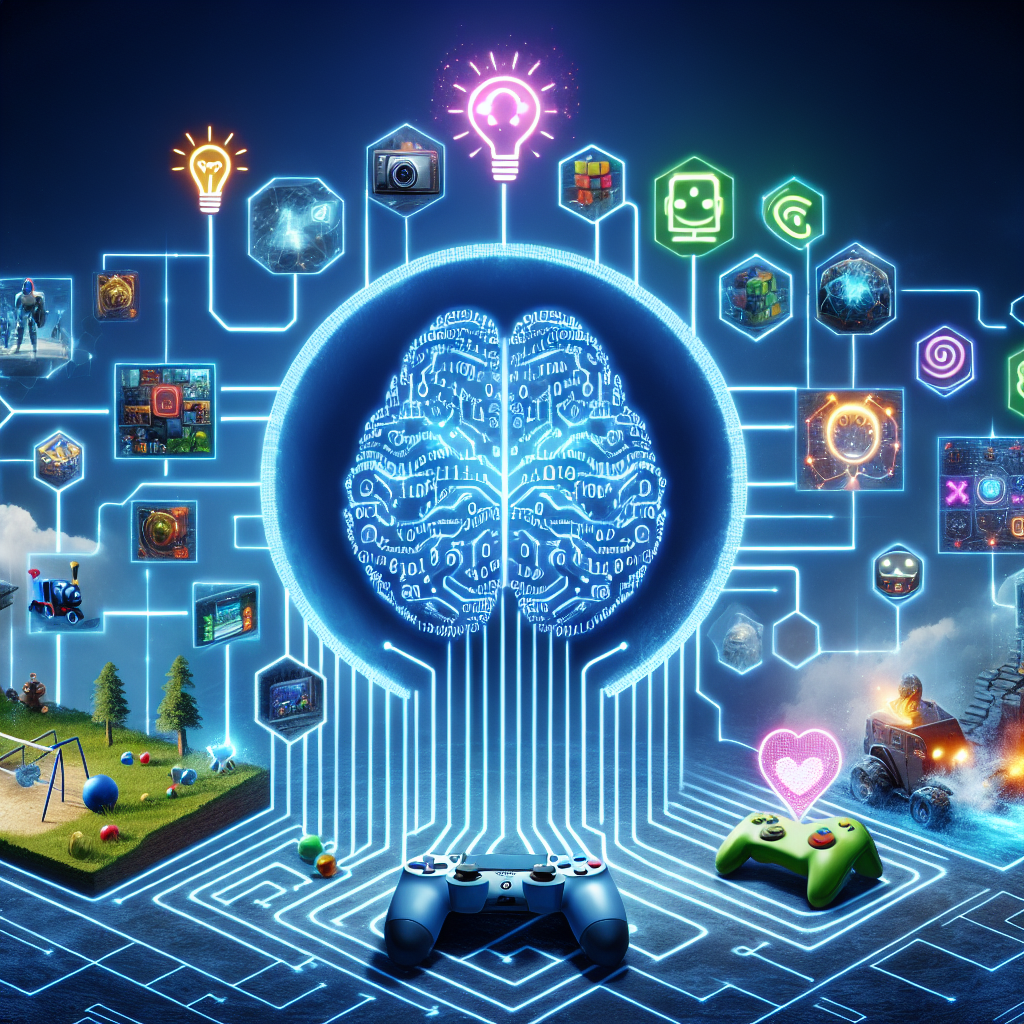Artificial intelligence (AI) has become a predominant factor in the evolution of video games, transforming the way players interact with virtual worlds and characters. From improving enemy behavior to enhancing the overall gaming experience, AI plays a crucial role in creating immersive and engaging gameplay. In this article, we will explore the various ways in which AI is used in video games to enhance user experience and provide a more realistic and dynamic gaming environment.
1. Improved Enemy Behavior
One of the most significant ways in which AI enhances user experience in video games is through the improvement of enemy behavior. In the past, enemies in games were often predictable and followed predetermined patterns, making them relatively easy to defeat once the player learned these patterns. However, AI has revolutionized enemy behavior in modern video games, making enemies more intelligent and adaptive.
AI-powered enemies can now learn from the player’s actions and adapt their strategies accordingly, making each encounter more challenging and engaging. For example, in the popular game “The Last of Us Part II,” enemies will communicate with each other, flank the player, and use cover to outsmart them. This level of intelligence and adaptability creates a more realistic and dynamic gameplay experience, keeping players on their toes and requiring them to think strategically to overcome their foes.
2. Dynamic Environments
AI is also used to create dynamic environments in video games, where the world around the player reacts and changes based on their actions. This can include things like changing weather patterns, evolving ecosystems, or dynamic events that occur in response to the player’s choices. For example, in the game “Red Dead Redemption 2,” the world around the player will react to their actions, with NPCs responding differently based on the player’s reputation and interactions with them.
Dynamic environments add depth and immersion to video games, making the world feel alive and responsive to the player’s actions. This not only enhances the overall gaming experience but also creates a more realistic and engaging world for players to explore and interact with.
3. Personalized Gameplay
Another way in which AI enhances user experience in video games is through personalized gameplay experiences. AI algorithms can analyze player behavior and preferences to tailor the game experience to their individual needs and playstyle. This can include things like adjusting difficulty levels, recommending quests or missions, or even creating personalized storylines based on the player’s choices.
For example, in the game “The Witcher 3: Wild Hunt,” the AI system analyzes the player’s decisions and interactions with NPCs to tailor the story and quests to their choices. This creates a personalized and immersive gameplay experience that feels unique to each player, enhancing their overall enjoyment of the game.
4. Enhanced Graphics and Visuals
AI is also used to enhance the graphics and visuals of video games, creating more realistic and immersive environments for players to explore. AI algorithms can be used to improve things like lighting, textures, and character animations, making the game world feel more lifelike and visually stunning.
For example, in the game “Horizon Zero Dawn,” AI-powered algorithms were used to create dynamic lighting effects that change based on the time of day and weather conditions. This level of detail and realism adds to the overall immersion of the game, creating a visually stunning experience for players to enjoy.
5. Improved NPC Interactions
Non-playable characters (NPCs) play a crucial role in creating a realistic and immersive gaming experience, and AI is used to enhance their interactions with the player. AI-powered NPCs can now exhibit more complex behaviors, emotions, and dialogue options, making them feel more like real characters with their own motivations and personalities.
For example, in the game “Cyberpunk 2077,” NPCs have their own schedules, routines, and relationships with other characters in the game world. This level of depth and complexity in NPC interactions adds to the overall immersion of the game, making the world feel more alive and dynamic.
FAQs
Q: How is AI used in video games?
A: AI is used in video games to enhance enemy behavior, create dynamic environments, personalize gameplay experiences, enhance graphics and visuals, and improve NPC interactions.
Q: What are some examples of AI-powered video games?
A: Some examples of AI-powered video games include “The Last of Us Part II,” “Red Dead Redemption 2,” “The Witcher 3: Wild Hunt,” “Horizon Zero Dawn,” and “Cyberpunk 2077.”
Q: How does AI improve enemy behavior in video games?
A: AI improves enemy behavior in video games by making enemies more intelligent and adaptive, allowing them to learn from the player’s actions and adapt their strategies accordingly.
Q: How does AI personalize gameplay experiences in video games?
A: AI personalizes gameplay experiences in video games by analyzing player behavior and preferences to tailor the game experience to their individual needs and playstyle.
In conclusion, AI plays a crucial role in enhancing user experience in video games, creating more immersive and engaging gameplay experiences for players. From improving enemy behavior to creating dynamic environments and personalized gameplay experiences, AI has revolutionized the world of gaming and continues to push the boundaries of what is possible in virtual entertainment. As technology continues to advance, we can expect to see even more innovative uses of AI in video games, further enhancing the overall gaming experience for players around the world.

